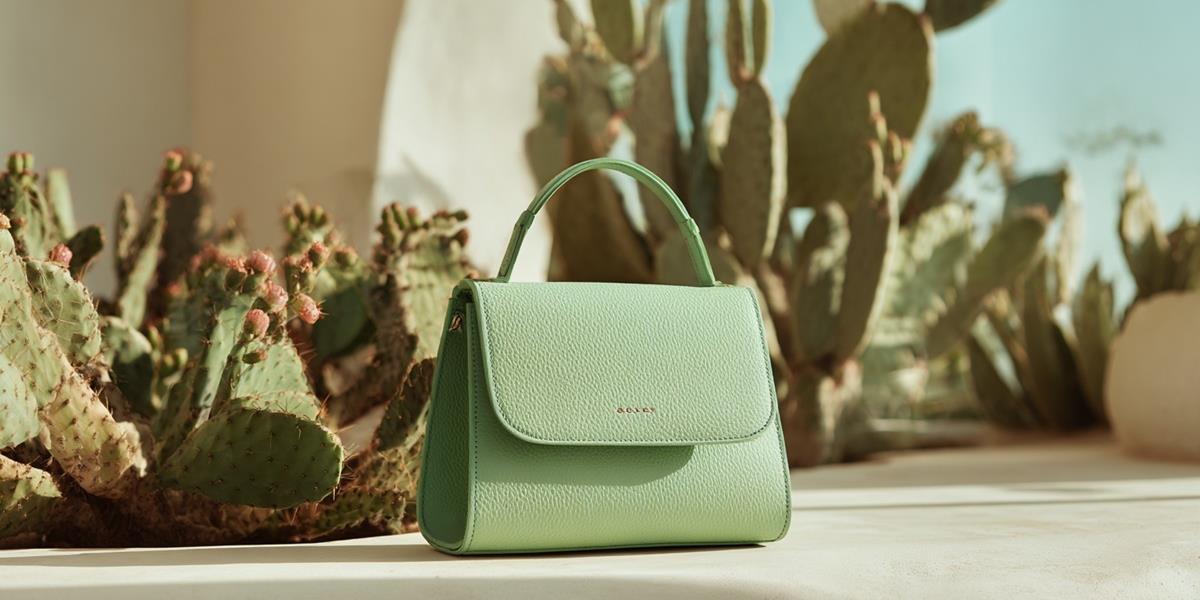🌵 Cactus Leather: The Sustainable Luxury Fashion Shouldn’t Ignore
There’s a shift happening in fashion. Quiet, but powerful. More designers are turning away from wasteful materials and looking for something better—something beautiful, ethical, and made with intention.Enter cactus leather.
It looks like leather. Feels like leather. But it’s made from plants, not animals. And it might just be one of the smartest materials we’ve seen in years.
So, What Exactly Is Cactus Leather?
It’s made from the prickly pear cactus—yes, the same one you’ve seen in dry, sun-soaked landscapes. The mature leaves are harvested (without harming the plant), mashed into a pulp, and transformed into a soft, durable material that mimics real leather.No heavy chemicals. No cruelty. Just smart design using what nature already gives us.
Where Does It Come From?
Most cactus leather today comes from Mexico, where the plant grows naturally and thrives with almost no water. A company called Desserto is leading the way. Their farms don’t use pesticides or herbicides. Just sunlight, soil, and patience.It’s slow fashion at its core.
Why Cactus Leather Makes Sense
Let’s keep it simple. Here’s why this material matters:- It’s planet-friendly
Cactus uses minimal water, regrows quickly, and doesn’t need toxic chemicals to grow or process. - It’s vegan, cruelty-free, and stylish
You get the look and feel of leather, without the ethical questions. - It actually lasts
Strong, flexible, and naturally water-resistant. Bags, belts, wallets, shoes — it can handle daily life. - It looks good
Rich textures, clean finishes, and colors that feel elevated. It doesn’t just pass as leather—it plays in the same league.
Can Cactus Leather Be Produced in Different Colors?
Yes. Cactus leather can be dyed in a wide variety of colors—from soft neutrals and deep earth tones to bold shades like red, blue, or emerald green.The material holds color beautifully, making it perfect for brands that want both flexibility and elegance in their palette.
Whether you're designing minimal classics or vibrant statements, cactus leather adapts without losing its natural texture and premium finish.
Are There Downsides?
A few, yes. Not dealbreakers—but worth knowing:- It’s still new. Production is growing, but it’s not yet available everywhere or at scale.
- Not always 100% natural. Some blends include a small amount of PU to boost durability. You have to check the label.
- Long-term wear? Early signs are good, but we’re still learning how it ages after 5+ years of wear.
But that’s the thing with innovation—it takes time. And cactus leather is moving fast.
How to Care for It
Good news: it’s low-maintenance.- Wipe with a soft, damp cloth
- Keep out of harsh sun for too long
- If needed, use a gentle wax or spray to protect the surface
- Store it like you would any favorite item—cool, dry, and clean
It ages well when you treat it with care. Like any quality piece.
Why We Think Fashion Should Get Behind It
Because it hits the sweet spot: luxury with less impact.Cactus leather doesn’t ask designers to choose between beauty and responsibility. It gives you both.
It lets independent creators work with a material that’s ethical and exciting. And it gives you—our customer—access to accessories that are made well and made with purpose.
This isn’t a trend. It’s the future of thoughtful design.
One Last Thing
Luxury isn’t about labels anymore. It’s about values. Cactus leather proves we can have both: the aesthetic we love, and the conscience we need.And that’s exactly what we believe in.
Explore Cactus Leather Products

